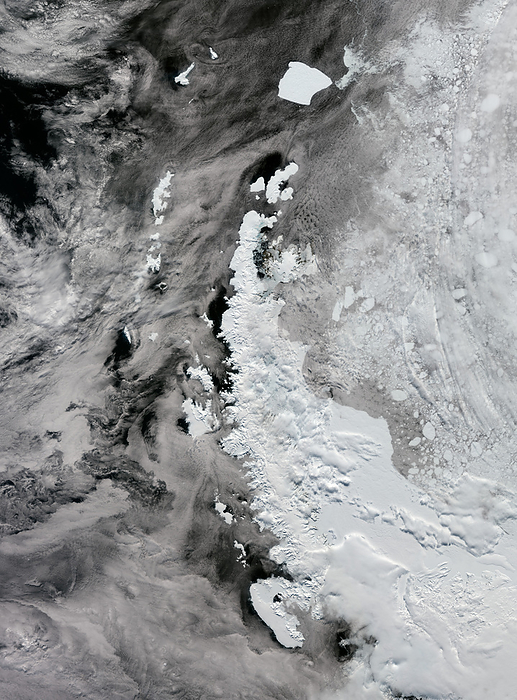
RM
Antarctic peninsula landscape, satellite image
Satellite image of the Antarctic peninsula landscape. It resembles a 1000-kilometre-long arm covered with ice, stretching towards the southern tip of South America. The west coast of the peninsula has over 100 large glaciers and numerous islands, and moving northwards, there are many more islands separated from the peninsula's northwestern tip by the Bransfield Strait. To the east, you can see the A23a iceberg (top, centre-left), which is currently the largest iceberg in the world. It calved from the Filchner-Ronne ice shelf in West Antarctica in 1986, but only recently, driven by winds and currents, started drifting quickly away from Antarctic waters. In recent decades, the Antarctic Peninsula has experienced warming, and using satellites to monitor this region over this time period provides evidence of trends and allows scientists to make predictions about the continent's future. Image data obtained by the Copernicus Sentinel-1 satellite., by EUROPEAN SPACE AGENCY/SCIENCE PHOTO LIBRARY

More
Top Categories
